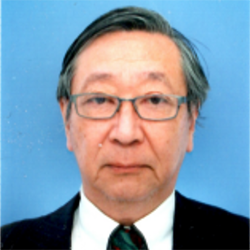
Tamaki YANO (矢野 環)
Professor Emeritus, Doshisha University
(同志社大学名誉教授)
所属 Affiliations
- 埼玉大学・同志社大学名誉教授
Professor Emeritus, Saitama University & Doshisha University - 同志社大学人文科学研究センター嘱託研究員
Affiliate Researcher, Institute for the Study of Humanities and Social Sciences, Doshisha University - 茶の湯文化学会副会長
Vice-President, Japanese Society for Studies of Chanoyu
経歴・活動実績 Professional Experience
- 1978 年 京都大学大学院理学研究科後期課程数学専攻修了
Doctorate in Mathematics, Faculty of Science, Kyoto University - 1995年 埼玉大学理学部数学科教授
Professor, Dept of Mathematics, Faculty of Science, Saitama University - 2005年 同志社大学文化情報学部教授
Professor, Faculty of Culture and Information Science, Doshisha University - 生活美学の一つともいえる、生活文化としての、茶の湯・華道・香道に特に興味をもつ。源氏物語の時代から高度に洗練された生活の美としての、薫物にも興味がある。それらと共に、アンケート調査などのデータ処理の手法も、多変量解析の通常以外に西里静彦氏の高度な手法も扱っている。
Particularly interested in chanoyu tea tradition, kadō flower arrangement, and kōdō incense ceremony as life arts that can be considered a form of lifestyle aesthetics. Also interested in takimono (blended incense and infusing robes and spaces with blended scents) as a highly refined aesthetic lifestyle practice since the time of The Tale of Genji. Alongside these pursuits, explores data processing methods, such as surveys and questionnaires, and other common methods of multivariate analysis as well as the advanced analytical methodologies of NISHISATO Shizuhiko.
HP(個人ページ、本所属先のページ、researchmapなど)
- 旧ページ1
- 旧ページ2
- researchmap
- 薫物から見る『源氏物語』ー『うつほ』と『栄花』の間ー
- 古典文学の語句数量化からの諸問題ー戦後の最古例と、処理の問題ー
- 香道での「宗祇状」について
- 「志野家名香合」の写本軍について
著書、論文、その他の活動等
- 1995 『大辞林』第二版、三省堂、香道項目等執筆・改訂
1995 “Kōdō” (incense ceremony) entry in Daijirin encyclopedia, 2nd edition, Sanseidō. - 1999 『君台観左右帳記の総合研究ー江戸初期柳営御物の決定ー』勉誠出版、三徳庵茶道学術賞授賞
1999 Comprehensive Study of the Kundaikan sōchōki and the Formalization of the Early Edo Shogunal Collections, Benseisha Publishing. Recipient of Santokuan Tea Studies Prize. - 2000 『日本国語大辞典』第二版、小学館、香道項目等執筆・改訂
2000 “Kōdō” (incense ceremony) entry in Nihon kokugo daijiten dictionary, 2nd edition, Shōgakukan. - 2001 『茶の古典』茶道学大系 第十巻、淡交社
2001 "Tea Classics" in Chadōgaku taikei vol. 10, Kōdansha. - 2021 『南方録と立花実山茶書』茶書古典集成11、淡交社。大半の校注、「会」の本文と脚注担当
2021 "Nanpōroku and the Tea Texts of Tachibana Jitsuzan" in Chasho koten shūsei 11, Kōdansha. Most notes and “kai (gatherings)” entry text and notes. - 2022 「九條家薫物書についてー松寿文庫『薫物相伝次第』とその周辺ー」、『文化情報学』Vol.17, No.1,2合併号
2022 "Kujō family takimono texts: the Shōju Bunko Takimono sōden shidai and its context" in Bunka jōhō gaku Vol. 17, No. 1-2. - 2022 『利休の茶書』茶書古典集成6、淡交社。北野大茶湯、利休百会記、今井宗久茶湯書抜の担当
2022 "Rikyū's tea texts" in Chasho koten shūsei 6, Kōdansha. "Kitano dai chanoyu" "Rikyū hyakkaiki" and "Imai Sōkyū chanoyu kakinuki" entries. - 2022 「『利休百会記』の内容と系統学的検討」、『茶書研究』第十一号、茶書研究会
2022 "Taxonomic and Content Study of the Rikyū hyakkaiki" in Chasho kenkyū Vol. 11, Chasho Kenkyūkai.
Zashiki kazari: Japanese Reception Hall Display through the Lens of the Kundaikan sochoki
座敷飾の流れ ー君台観左右帳記を核にー
ABSTRACT
This lecture will present an overview of zashiki kazari, a style of reception hall display that originated in Japan's Muromachi period (14th-16th century), and the shoin-style architecture that provided the physical context for this type of display. In particular, it will examine entries from the Kundaikan sōchōki, a commentary on various aspects of zashiki display.
But familiarity with the Muromachi period alone is insufficient for addressing this topic. It also requires an understanding of the history of Japanese architectural styles as well as comprehension of conventions of Buddhist altar display.
As for the objects that were shown in these spaces, we will consider the case of the spherical silver incense burner in the Shōsōin collection, which has a long history as a display object since the Nara period (8th century). Furthermore, recognizing how vestiges of the michōdai (curtained platform), a device of the shinden-style architecture of the Heian period, can still be found in the luxurious buildings of the Edo period is also key to understanding zashiki kazari display.
Zashiki kazari of the Muromachi period arose out of the establishment of various structural elements, such as alcove-like oshiita spaces, chigaidana staggered shelves, and built-in tsuke-shoin studies. Specifically, the (tsuke) shoin (attached study), from which the term shoin architecture takes its name, referred to a "protruding desk" placed in front of a window where monks would sit to study. This type of design led to structures such as the Dōjinsai study at the Tōgudō hall in what is now Ginkakuji temple, eventually resulting in the formalization of shoin-style architecture.
Originally Buddhist altar goods, the flower vase, candlestick, and incense burner (along with its accompanying accoutrements, the incense tool stand and incense container) comprise a three-piece set known as mitsugusoku (set of three). When candlesticks and flower vases are placed flanking the incense set, this is called gogusoku (set of five) and when an additional pair of vases is placed on each side of this set, the display is called morokazari. These are the main types of items that were placed in front of sets of three or five hanging scroll paintings to form the zashiki kazari display.
Kundaikan sōchōki is the title of a section of the esteemed manual of zashiki kazari display of the same name that presents a list of names of Chinese painters ranked into top, middle, and lower tiers. Being such a valuable reference, the section title came to be used to refer to the instructional manual as a whole. The manual identifies painters such as Muqi, Yujian, and Huizong, and includes notes on various objects, such as types of porcelain and ceramics and their descriptions, explanations of types of carved lacquer, tea leaf jars and tea caddies (for matcha tea powder), as well as writing implements for displaying in tsuke-shoin study spaces. It also describes how to arrange these objects on various types of shelves, including staggered wall shelving and tea utensils stands. The contents of this manual were further passed down from Nōami and Sōami, who organized and created them, to other shogunal art advisors such as Bun'ami, and Shōami.
These display methods can be confirmed not only through written transmissions but are also verifiable through reconstructions of the actual displays that can be seen, for example, at the Tokugawa Art Museum.
Finally, the presentation will examine details of the formal so-called "Sukiya Onari" shogunal visit to the Shimazu family residence in 1632 and the informal private visit of Shogun Tokugawa Ienari to the Owari Tokugawa daimyo's residence 200 years later in 1832, which demonstrate how shoin-style zashiki kazari was passed down from generation to generation.
摘要
室町時代に発する、座敷飾とその場である書院造についての概要を与える。特に、座敷飾の様々な面の解説書である、君台観左右帳記の記載を確認する。
室町時代のみの理解では十分でない。日本における建築様式の理解、また仏教での飾についての確認も必要となる。
また、飾りの道具として奈良時代から長い命脈を保つ、毬香炉について確認する。さらに、寝殿造の装置の一つである、御帳台が、江戸時代の豪華な建物にその名残をとどめていることも、座敷飾の理解には必要である。
室町時代の座敷飾りは、押板、違い棚、付書院などの装置の上に成立する。特に、書院造の語源となった(付)書院は、僧院での窓際の勉強机である出文机から来たものである。そうして、現在の銀閣寺東求堂同仁斎のような形式を経て、書院造が成立する。
元々は仏教の荘厳具であった、香炉、花瓶、燭台は、香炉の付属品である、香匙台(きょうじだい)、香合(こうばこ)を附置して、三具足と呼ばれる、座敷飾の重要道具セットとなる。さらにはその香具の左右に、燭台・花瓶各2個を配置したものは、五具足とよばれ、さらにその両側に対花瓶を配置すると、諸飾(両飾。もろかざり)と呼ばれる。これらが、座敷飾りのメインともいうべき、三幅対や五幅対の前の飾り付けである。
座敷飾のマニュアルとして著名な、君台観左右帳記は、中国画家を上中下に階級別けしたリストの部分の名称であり、それが座敷飾全体の指南書の名となったものである。牧谿、玉澗、徽宗などの画家、磁器・陶器の種類と説明、彫漆の説明、葉茶壺や茶入(抹茶壺)、付書院に飾る文具などの道具がある。そして、茶湯棚を含む、様々な違い棚の飾り付けの方法などが記載されている。また、その内容は、整理作成した能阿弥や相阿弥などから、他の阿弥衆、文阿弥、正阿弥などにも伝わった。
この飾り付けは、伝書で確認するのみでなく、実際に徳川美術館における復元展示なども確認する。
最後に、いわゆる数寄屋御成の島津家の場合(1632)の詳細と、その200年後の幕末(1832)の、家斉将軍による尾張徳川家お立ち寄りをとりあげ、書院造の座敷飾が連綿と引き継がれていたことを確認する。